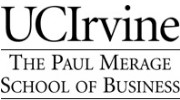Well, to break the suspense: We came 3rd in the VCIC Wildcard. It came down to a matter of percents. While I believe we did many things better than our competitors, we made the fatal mistake of asking for only 30% of the company instead of 40%. Our preparation for the tournament helped in many areas, but we really needed a bottom line valuation guideline for various stages of a company.
Our company of choice just finished their prototype and had received some commitments for sales in 2007. Our preparation told us to ask for 25%-50% of a company. The key was to get appropriate exit numbers. Our exit numbers demonstrated a solid multiple after 5yrs when only controlling 30%. So, as a team we agreed to a pre-money valuation of $3.5M and to fund them an additional $1.5M (giving us 30%). This was our undoing. Our funding number was correct, but the valuation fell between $1-2M. Feedback was "you need to get 40%" period. After all our preparation, it was a tough lesson to learn.
The worst part of it was that I remember at our first group meeting I quoted a passage from a book called "Start-Up to IPO" which stated that VC's compute how much a business needs and assumes that is worth 40% of the company and computes its pre-money value back from that. Now after all our research and learning, this rule faded from my mind. If we had followed it, it would have delivered a pre-money value of $2.25M (before our $1.5M investment) and that could have won us the competition (no guarantee, but it would have made it close).
Now, I not saying I was right and my team mates were wrong. I agreed to our valuation like everyone else. The point is I think we really bought in to the idea that there had to be some science behind a VC valuation, when really it is as simple as what do you need? Well, that is worth 40% of your company!
Well, the lesson is loud and clear. I think the 1st years from our team will be able to instruct next years team to a victory. We were close ... but for some simple rules. We will deliver the simple rules to next years team and combine it with our more scientific to create a winning combination next year.
One other side lesson. We were given instruction to find the key weaknesses in the business plan and to hit them hard to let the judges know we understood them. Well, we hit them alright - probably a bit too hard. The judges were impressed we knew the weaknesses (some which they may had not know about), but in the end you have to partner with one of these businesses. Therefore, you need a friendly, but direct tone that will delve deep enough to clarify the problems, but not alienate the entrepreneur. This is not as easy as it seems, but it is do-able. Since we had so much feedback to go in for the kill, we may have crossed that diplomatic line (and anyone who knows me we, I can ruthlessly attack weaknesses with the best of them). Unfortunately, in the past few years I have learned some diplomacy that I could have used if so instructed. Again, no blame - lesson learned.
There are a few other minor lessons, but this post is long enough. Overall, the VCIC is an amazing experience. Anyone interested in entrepreneurship or finance should look into participating in this competition. You will learn an enormous amount about how the real world works. I am indebted to my team mates Ben Alarcon, Chris MacKenzie, David Lee and Simon Singh and the people who donated there time to help us Sharif El-Badawi, Bob Holmen, Thor Clark, and John Creelman. It was a great experience.
Now excuse me while I drown my sorrows.
Saturday, January 20, 2007
Subscribe to:
Post Comments (Atom)


1 comment:
Job well done to you and your team!
We're especially impressed that you have learned from your experience and taken the positives from it. And you seemed to have fun doing it.
We look forward to next year and the future.
Post a Comment